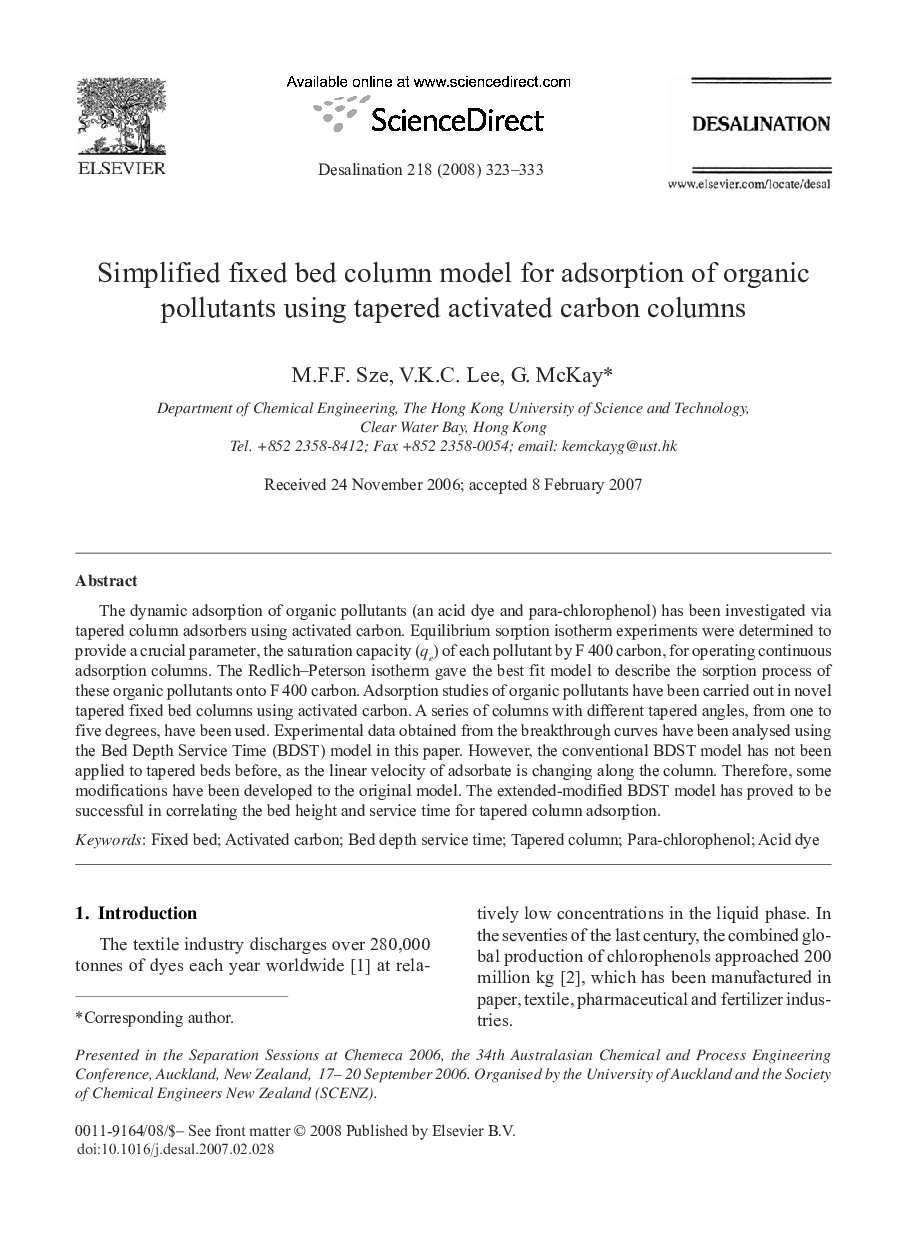| Article ID | Journal | Published Year | Pages | File Type |
|---|---|---|---|---|
| 627903 | Desalination | 2008 | 11 Pages |
The dynamic adsorption of organic pollutants (an acid dye and para-chlorophenol) has been investigated via tapered column adsorbers using activated carbon. Equilibrium sorption isotherm experiments were determined to provide a crucial parameter, the saturation capacity (qe) of each pollutant by F 400 carbon, for operating continuous adsorption columns. The Redlich–Peterson isotherm gave the best fit model to describe the sorption process of these organic pollutants onto F 400 carbon. Adsorption studies of organic pollutants have been carried out in novel tapered fixed bed columns using activated carbon. A series of columns with different tapered angles, from one to five degrees, have been used. Experimental data obtained from the breakthrough curves have been analysed using the Bed Depth Service Time (BDST) model in this paper. However, the conventional BDST model has not been applied to tapered beds before, as the linear velocity of adsorbate is changing along the column. Therefore, some modifications have been developed to the original model. The extended-modified BDST model has proved to be successful in correlating the bed height and service time for tapered column adsorption.
